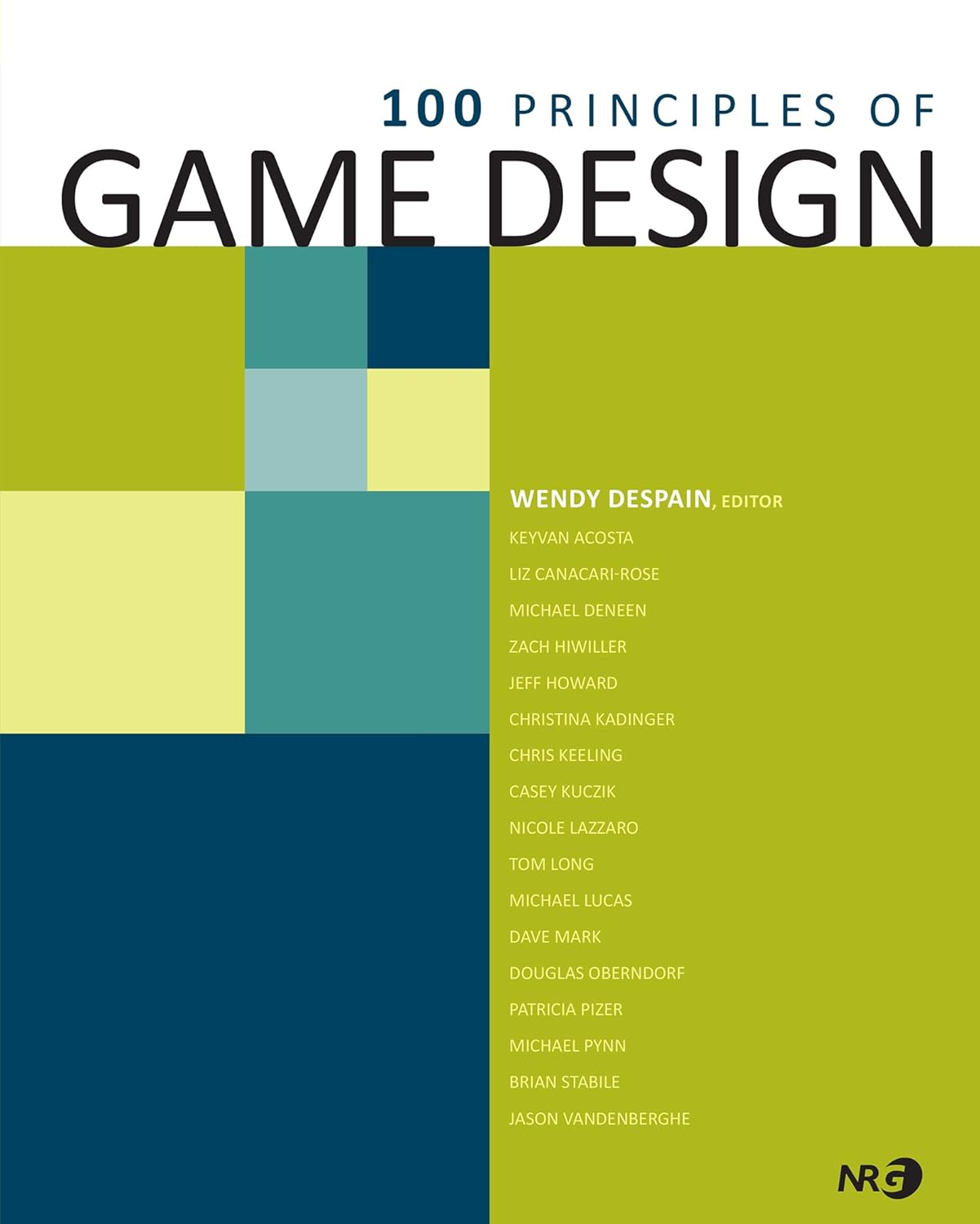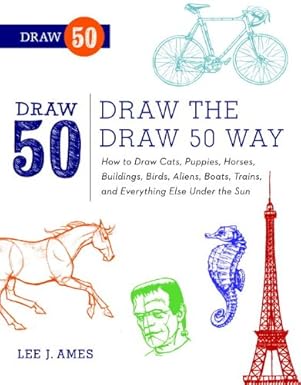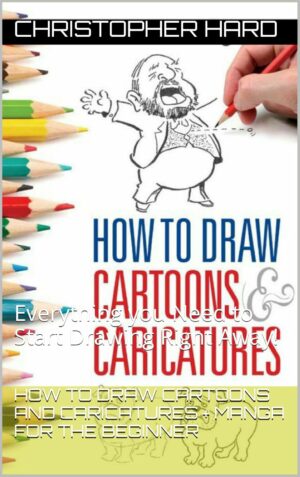For the first time, 100 Principles of Game Design gathers some of the best of these big ideas into one toolkit. Seasoned designers will be glad they don’t have to hold it all in their heads anymore, and beginning design students can use the book to learn the tools of the trade. When the going gets tough, everyone can turn to this book for guidance, inspiration, or just to remind them of what works. Collected from every popular school of thought in game design, these core principles are organized by theme: innovation, creation, balancing, and troubleshooting.
• Includes advances from the world’s leading authorities on game design, some explained by the creators themselves
• A reference book of finite, individual principles for easy access, providing a jumping off point for further research
• Principles originating in fields as diverse as architecture, psychiatry, and economics, but shown here as they apply to game design
• Richly designed with illustrations and photos, making each principle easy to understand and memorable
• Timeless approach includes feedback loops, game mechanics, prototyping, economies of scale, user-centered design, and much more
Professional designers and instructors at one of the world’s leading game design institutions lay out the building blocks of diverse knowledge
required to design even the simplest of games.
Read more









Checo –
This book is an excellent compendium of Game Design concepts. It gives you a glimpse of information about a topic and if you feel that it might be of your interest, then you can read more on different sources. Very easy to navigate on the kindle thanks to the linked topics structure.
Richard Dansky –
What Wendy Despain and her coauthors have managed here is a much needed survey of important design concerns and techniques. Rather than dive deep into dense paragraphs of jargon, the authors present quick high-level discussions of key design questions and principles, making them accessible and encouraging the reader to pick up, try out, and combine what they have read in generous, accessible fashion. Beautifully designed, the book presents a series of pleasantly illustrated two-page spreads that prevent the reader from being intimidated by a wall of text. This book makes an excellent introduction to the core principles of game design for a beginner, or a good inspiration for brainstorming by an experienced pro.
Geraldo XEXEO –
This is a collection of topics, written in different levels of difficulty. It is easy reading and some topics are useful, however some are not. Kind of “Notes about anything related to games”.
Raymond Holmes –
A great book for game designers to learn about the large variety of subjects that are involved in good game design. Great bite sized topics that are easy to digest and serve as a reference for what to research further.
Chris H –
Book was great for the class. Good Value.
Lisa Brown –
This book is a fantastic reference guide and great as a “skimmer.” I’ve been a professional game designer for about 4 years now, and I found it really useful for refreshing my memory on concepts I’d heard, read about, or used from other contexts (other books, articles, GDC presentations, best practices passed on through oral tradition, etc). Though none of the principles go too much in depth, the one-page-per-principle format makes it really easy to flip through and serve as a springboard for deeper research or just a refresher to apply something to what I’m doing.
Aspiring game designers may find it more useful in the “springboard for deeper research” sense, since I found I got the most out of the principles triggering practical contexts that I had already experienced and the convenience of having a reference for all the concepts in one place.
Dan Tanguay –
I suspect I’ve dated myself with this review’s title. (Do people use Cliff Notes anymore?) Still, the title is apt. This is a very usable, high-level guide of the main principles game designers use day to day. One page per principle provides a good level of granularity, resulting in a reference that will get more use than the other tomes that go deeper on each of the principles.
This book serves a wide range of design experience as well. Beginners can use it to survey the basics before diving into those deeper tomes. But it also appeals to the experienced designer. Even after 15 years of designing games, I can’t always recall each of these principles at a moment’s notice. Thankfully, I have this book to help with that now.
R. Wenner –
I bought this book looking for detailed general information on designing games, in particular board or card games.
Part 1 has general information for board, card, role playing, and video game design. The other parts focus mostly on (professional) video games and have not much for hobby designers, and neither for board, card, or role playing game designers. If you’re not interested in designing computer games, you will get next to nothing from the remaining 75% of the book, and what you get from the first 25% is meager at best.
The whole book reads like a section of random notes or blog pages. Little snippets, mostly incomplete or with trivial information. For example, rock paper scissors is explained with a table, but you’re assumed to be familiar with the prisoner’s dilemma.
The lack of structure (the snippets are grouped in 4 parts of the book, but only sorted alphabetically in each part, not in a logical sequence) makes the book hard to read: lots of forward references, little connections between the sections.
Each of the sections is only a single page long. This is not enough for almost anything, and I frequently felt like reading “There is such a thing as xyz, google it. Next!” (“Google it” cause there is no bibliography and only a single web link.) That is utterly wrong for a book.
Speaking of “next”: The next page after each snippet is always a picture. Except for a handful of exceptions, it’s just a picture of something remotely related, like the hand gestures for rock paper scissors. Or a glass of water. Or a still life of some paint brushes. A terrible waste of space that makes me wonder if the book had to be brought to a certain page count.
What bothers me most about this book is its dump mentality. Each snippet is just dumped on the reader, with little advice on how to use that information in a game. For example, the Nash Equilibrium: how can I detect it in a game prototype, how do I avoid it, or do I even want to avoid it? On Supply and Demand, we read “it is important to carefully plan how the supply and demand of items in the game will work” — great, agreed, and how do I do that?
Many sections are so broad and high level (e.g., Define the Problem, Design by Committee) that they could fit any topic, from games to dieting to project management. More depth would have been helpful, plus examples from real games — what is the defined problem in e.g., Settlers of Catan? In Doubling and Halving, the author suggests to change numbers found in play testing as too low or too high by doubling or halving, respectively, but does not mention that most variables in the game don’t stand isolated and that changing one may cause ripple effects throughout the game. Nothing on how to estimate these ripples, how to check the changes, what to pay extra attention to, or what warning signs there might be.
This book tries to cover half a mile of stuff (not a whole mile, at least it does not try to cover programming, 3D modelling, or composing video game music), but does not even get half an inch deep. It’s frustrating.
I did like the appendix with some tips for methods to problem solving. It has some ideas on creativity and high level ways to design a game. Unfortunately, like the rest of the book it’s way too brief and unreflected.
An additional drawback of the electronic (PDF) version: most references are not made hyperlinks and I found myself frequently clicking the colored words to no avail. So much for UI design…
Bottom line: the book may have a few hidden gems, but mainly it’s an incomplete, sketchy collection of one-pagers, strung together without a clear concept. Stay clear of this book if you’re not designing video games. Be sure to flip through it and see for yourself before buying.